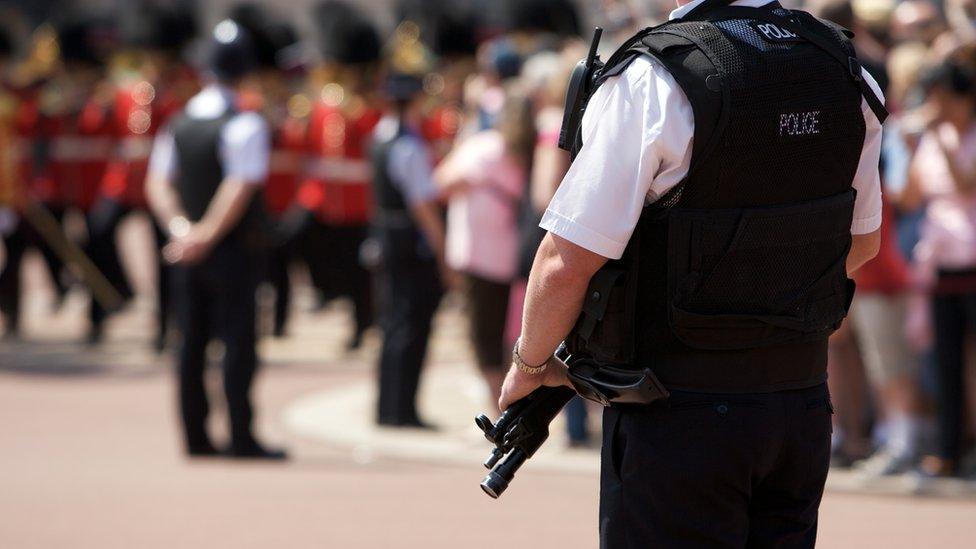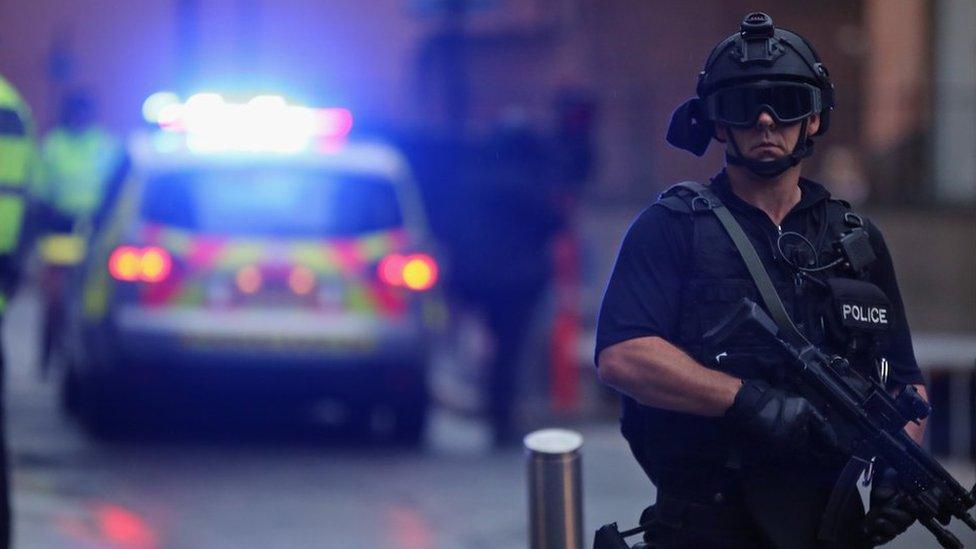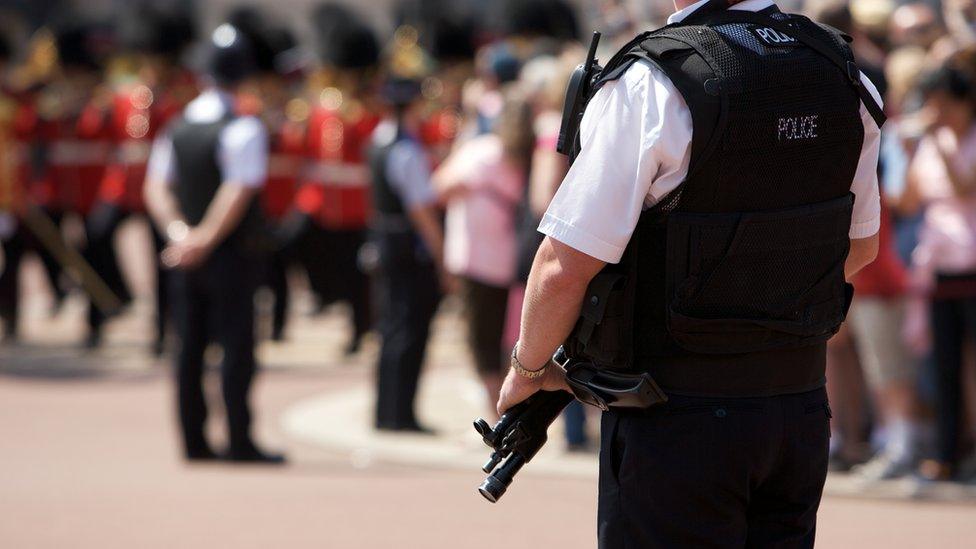UK terror threat level: Risk from right-wing extremists to inform system
- Published

Risks posed by right-wing extremists in the UK are to be included in the terror threat level system from now on.
Previously the system only assessed the threat from "international terrorism".
Home Secretary Sajid Javid said the assessment will now cover all forms of terrorism "irrespective of the ideology that inspires them" - including right-wing, Northern Ireland, and Islamist.
The changes do not affect the current threat level of "severe", meaning an attack is "highly likely", external.
The threat from Northern Ireland-related terrorism in Northern Ireland is also currently "severe". It remains separate from the national threat level.
Both levels are determined independent of government ministers.

New definitions
In a written statement announcing the changes, the home secretary said the definition of some of the threat levels have also been simplified "to ensure clarity".
The threat levels are now defined as follows:
Low - an attack is highly unlikely (changed from "unlikely")
Moderate - an attack is possible but not likely
Substantial - an attack is likely (changed from "a strong possibility")
Severe - an attack is highly likely
Critical - an attack is highly likely in the near future (changed from "expected imminently")

Mr Javid said the purpose of a threat level system is to allow security services and police forces to determine what security measures to undertake, and to help the public understand why these measures are necessary.
He said the levels are kept under constant review and are based on "the very latest intelligence, considering factors such as capability, intent and timescale".
"There remains a real and serious threat against the United Kingdom from terrorism and I would ask the public to remain vigilant and to report any suspicious activity to the police regardless of the threat level," Mr Javid added.
Since its introduction to the public, the terror threat level in the UK has never fallen below "substantial". It has not been that low since August 2014.
There were several spikes from "severe" to "critical" in 2017 after attacks at Westminster Bridge, Manchester Arena, London Bridge, a mosque in Finsbury Park and a Tube train in Parsons Green left a total of 36 people dead and hundreds more injured.
- Published17 June 2019

- Published7 May 2019

- Published19 March 2019
